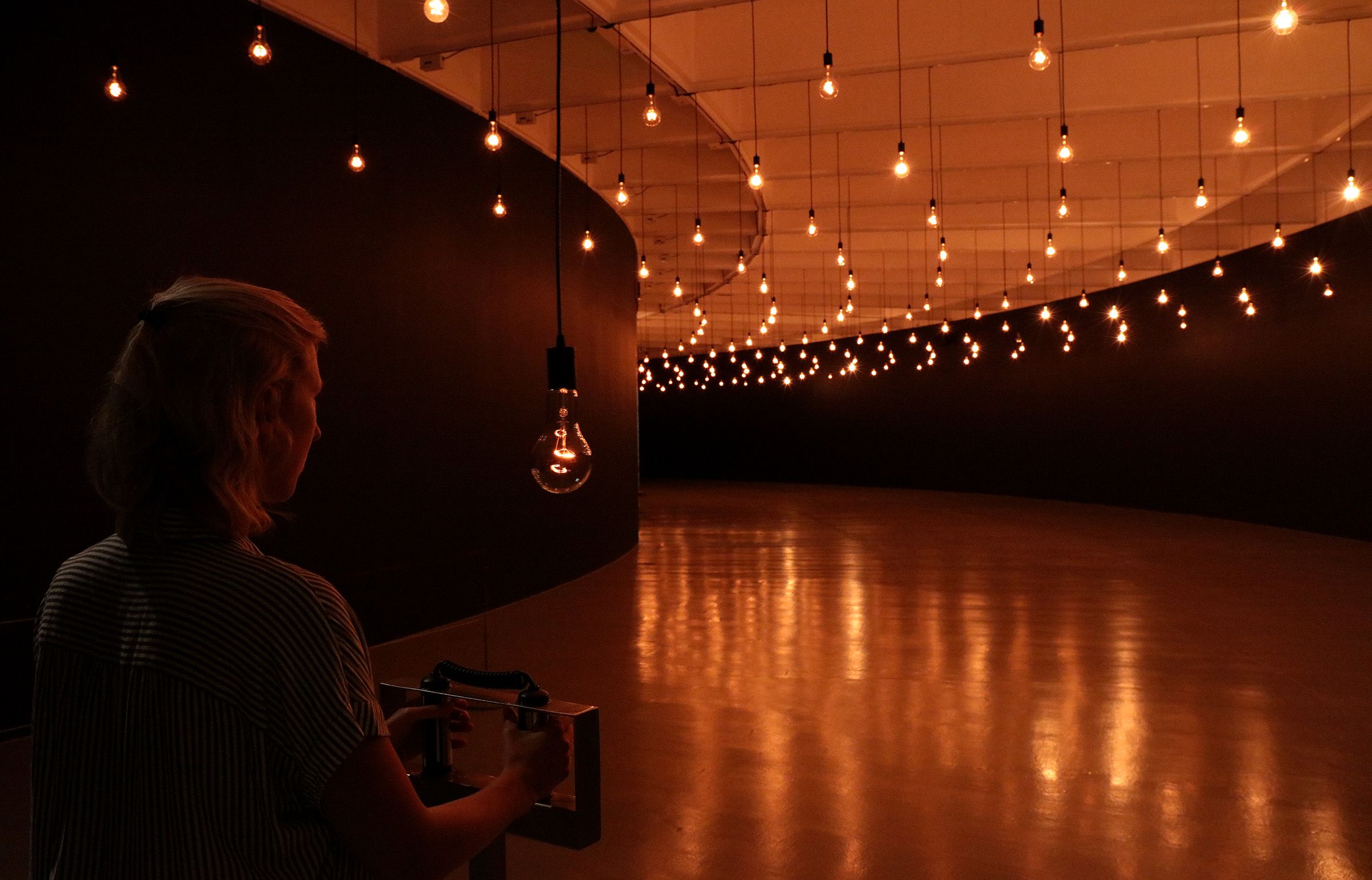Rafael Lozano-Hemmer debuted his first art exhibit in Washington, D.C., on Thursday: Pulse, the Hirshhorn’s largest interactive technology exhibit to date. Pulse encouraged visitors to partake in the art, see their heartbeat come to life and visualize a powerful part of the human body.
The Mexican-Canadian artist created three major installations for the exhibit. The three installations were constructed in large, open rooms. Each uses biometric sensors to detect visitors’ heartbeats. Their heartbeats are translated to art differently in each of the three installations.
Pulse Index is the first room in Lozano-Hemmer’s exhibit. At the end of a room is a scanner, which reads visitors’ fingerprint and heartbeats. A picture of the fingerprint is then displayed across the room on a huge wall. Each fingerprint is added to the massive number of projections of the last 10,000 fingerprints scanned. This creates an interesting effect across the whole room. You can tell there are many little pictures, but when you get closer, the fingerprints become clear.
The second room is called Pulse Tank, featuring illuminated tanks of water connected to hand sensors. Visitors place their hands on the sensor and watch the water in the tank ripple to match their heartbeats. The exhibit also projects the water’s ripples on a large, stretching wall. Both the water and projection are beautiful to watch — letting viewers visualize something usually hard to visualize.
The last installation, Pulse Room, was my favorite out of the three. The room was pitch black except for hundreds of clear lightbulbs hanging from the ceiling. At the end of the room, visitors hold onto a hand sensor that uses lights to display their pulses across the room.
The lights show both periods of a heartbeat — the refilling then pumping of blood. It not only looks like a pulse, it sounds like one, too. There is a subtle, but clear beat matching the flickering of the lights. If no hands are on the sensors, each individual light bulb flickers to the heartbeat of a past visitor.
Lozano-Hemmer did an incredible job of creating an experience, rather than just an art exhibit. The combination of interactive technology and art lets visitors partake in the art, rather than just look at it. The Hirshhorn is known for its modern exhibits, but Pulse was different, even more experimental than its typical ones.
There were people of all ages putting their hands on the sensors and watching their pulse come to life. It was an experience for every person, even for those who typically might not enjoy modern art. In the dark, spacious rooms, everyone could see their pulse — the beauty of an interactive art exhibit.
While I was standing in the last installation, watching my heartbeat reverberate across the room, I realized, as silly as it sounds, that many people take their heart for granted. This pulse keeps everyone alive — and it’s a beautiful thing. Lozano-Hemmer created the feeling of awe and gratitude in his exhibit, impacting every visitor. Pulse will be available for viewing at the Hirshhorn until April 28.



